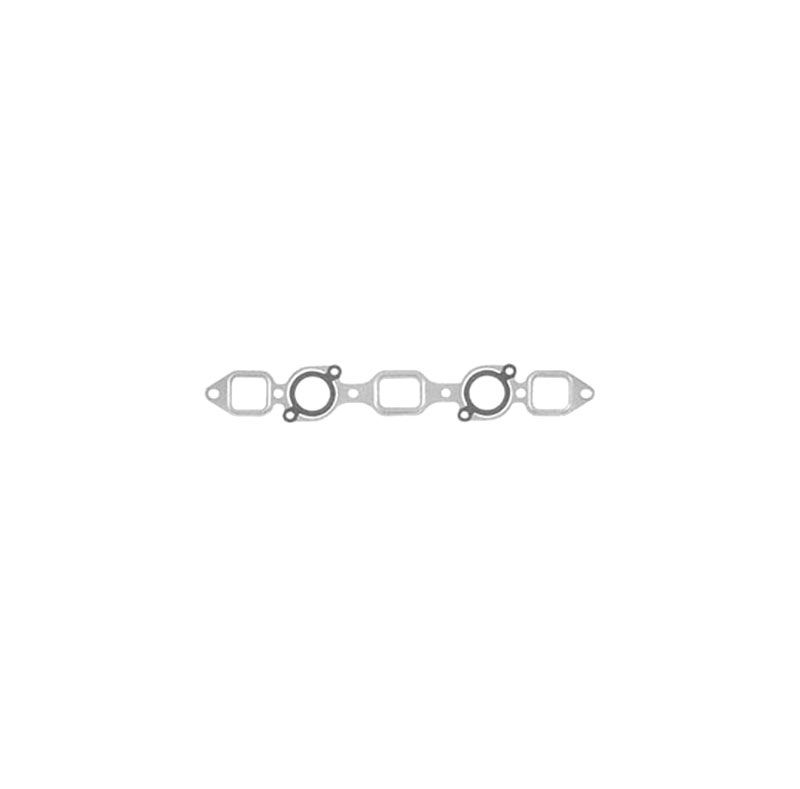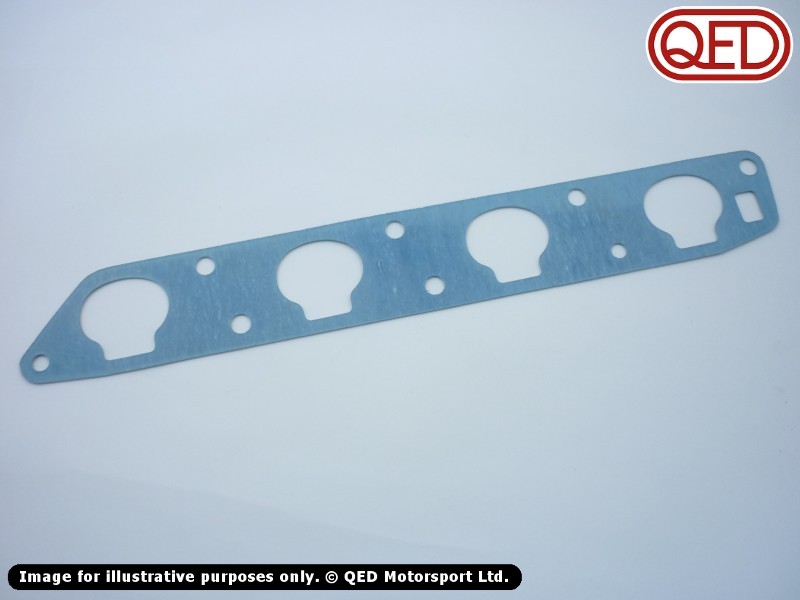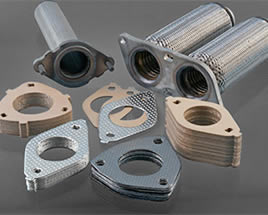
This is a time when there is a danger of getting debris in the engine. The surfaces have to be clean to make a good seal. Using your gasket scraper, remove all traces of the old gaskets from the intake and the cylinder head. Tools, nuts, washers, or debris can easily find their way into the engine without you realizing it, causing serious engine damage on start-up. This is a very tricky step, because it’s so easy to have foreign objects fall into the intake or into the ports at this time. If it puts up too much of a fight, go back and be sure all the fasteners are out. The gaskets will probably be sticky, so it will probably be necessary to gently pry the intake off of the cylinder head. There will likely also be a bracket supporting the intake to be removed. Inline 4’s and 6’s have the manifold hanging off the side, so there may be some bolts that have to be reached from underneath the car. In that case, check your workshop manual, as there will be a recommended sequence for loosening the bolts. If your engine is a V type, they will probably all be on top. Locate and remove all the fasteners attaching the intake to the engine. If you can visualize having the manifold unbolted from the engine and facing upward where you can get to the gasket, it may be that some of the hoses and wires can remain attached provided you don’t have to pull on them too hard. It may not be necessary to remove all the hoses and wires. The best thing to do is use tape or labels to match the hoses to their origin. Intake manifolds usually have a plethora of hoses and wires connected to them at various locations.ĭon’t just rip through there disconnecting them thinking you’ll remember where they go.

Drain your coolant from the pan into your gallon jugs to re-use it or dispose of it. Warning: Be sure you know where your dogs or cats are during this step Automotive antifreeze tastes good to them and they will drink it if they find a pan or a puddle of it and it will harm their kidneys.If your car doesn’t have a drain, you may have to loosen a hose at a low spot on the engine. Remove the radiator or coolant reservoir cap, locate the drains with your workshop manual, and let the coolant out into your drain pan. Older cars had drain cocks or plugs in the radiators and engine, but many newer cars don’t have a drain in the radiator and most of them still have engine drains.
Manifold gaskets manual#
Your workshop manual can tell you if that’s the case. There are a few types of engines that don’t have coolant passages in the intake.

Most cars run coolant through the intake manifold, so it will have to be drained before the manifold is removed. Working underneath a car is potentially one of the most dangerous things a home mechanic does, so you don’t want to take any chances that the car can shift and fall on you while you’re working underneath.

Jack the front of the car and place it on good jack stands.

Making sure the car is in park or in first gear if it is a manual, set the brake and put wheel chocks under the rear wheels. Inevitably, overheating and performance problems will be the result.ĭepending on the type of car, replacing an intake manifold gasket is the sort of job a determined home mechanic can perform, but for the unexperienced, there are potentially serious pitfalls which may cause engine damage, so be wary. When the intake manifold gasket fails, you may see coolant escaping and have air getting in where it shouldn’t. The gaskets are in place to provide a resilient, flexible surface that can make up for the imperfections of the mating parts and compensate for a small amount of relative movement. The parts may be finely machined and carefully fitted, but rarely are the mating surfaces perfect enough never to leak. Anywhere that two parts of the engine come together, there’s a chance for leakage.


 0 kommentar(er)
0 kommentar(er)
